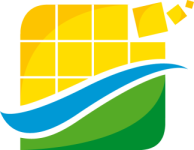Development and validation of a runoff and erosion model for lowland drained catchments
Résumé
Modelling water and sediment transfer in lowland catchments is complex as both hortonian and saturation excess-flow occur in these environments. Moreover, their dynamics was complexified by the installation of tile drainage networks or stream redesign. To the best of our knowledge, few models are able to simulate saturation runoff as well as hortonian runoff in tile-drained catchments. Most of the time, they are used for small scale applications due to their high degree of complexity. In this context, a model of intermediate complexity was developed to simulate the hydrological and erosion processes at the catchment scale in lowland environments. This GIS-based, spatially distributed and lumped model at the event scale uses a theoretical hydrograph to approximate within-event temporal variations. It comprises two layers used to represent surface and subsurface transfers. Observations of soil surface characteristics (i.e. vegetation density, soil crusting and roughness) were used to document spatial variations of physical soil characteristics (e.g. infiltration capacity). Flow was routed depending on the local slope, using LIDAR elevation data. Both the diffuse and the gully erosion are explicitly described. The model ability to simulate water and sediment dynamics at the catchment scale was evaluated using the monitoring of a selection of flood events in a small, extensively cultivated catchment (the Louroux catchment, Loire River basin, central France; 25 km$^2$). In this catchment, five monitoring stations were equipped with water level sensors, turbidity probes, and automatic samplers. Discharge and suspended sediment concentration were deduced from field measurements. One station was installed at the outlet of a tile drain and was used to parameterize fluxes supplied by the drainage network. The selected floods were representative of various rainfall and soil surface conditions (e.g. low-intensity rainfall occurring on saturated soils as well as intense rainfall occurring on dry soils in spring). The model was able to reproduce the runoff volumes for these different situations, and performed well, especially in winter (the relationship between observed and modeled values has R2=0.72) when most of the sediment are transferred. Therefore, future work will evaluate the model ability to reproduce the erosion and sediment dynamics in this catchment in order to provide a tool for sediment management in these lowland environments draining agricultural land where river siltation is problematic.
Origine : Fichiers produits par l'(les) auteur(s)


